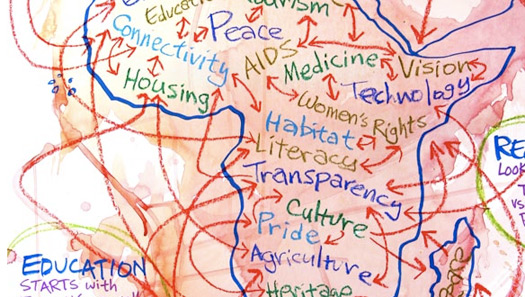The Design Imperialism Debate
As soon as I wrote my post about Emily Pilloton’s Design Revolution Roadshow, my husband was quick to show me this article written by Bruce Nussbaum over at Fast Company: Is Humanitarian Design the New Imperialism?
This article has caused quite a stir in the design community. At first glance, I found the article to be overly critical and I didn’t like how Nussbaum lumped Emily Pilloton, Project H and every single humanitarian design effort together and labeled it as one big flawed movement. Admittedly, I was also a little annoyed with my husband for giving me such a buzz kill after I was all excited about Design Revolution and Project H’s work, but I decided to save the link to the article for later anyway.
Today I had time to revisit the article and read it more thoroughly. I also had the chance to look at several responses from other designers. This is when it became more interesting and post-worthy to me.
According to Cameron Sinclair, Nussbaum has a thing for imperialism because Nussbaum also wondered if green was the “New Imperialism” in December 2009. To be fair, Nussbaum doesn’t outright say that he thinks green or humanitarian design is the “new imperialism” but simply that some people perceive it as such. Still, he seems to enjoy making these big statements, and Sinclair pokes fun at him for it, saying he seriously wonders “if Mr. Nussbaum is really an avid Star Wars junky and is trying to figure out who the design version Palpatine is.”
Robert Fabricant at frog design argues that while Nussbaum kicked off a worthwhile debate, he picked the wrong target. Fabricant goes on to defend Emily Pilloton in his post, and he also looks at some larger questions: Is the local model the only way to meaningfully engage in social-impact initiatives, as Nussbaum suggests? Are American designers who want to have an impact on global issues in emerging markets kidding themselves? And what about designers at larger firms like frog? Do we need to give up our jobs and move to a southern state to have an impact? He explains how frog design tries to avoid the pitfalls that Nussbaum referred to in his original post.
Emily Pilloton also responded to Nussbaum’s post on behalf of Project H. She agrees with his overall assessment of the problems with some humanitarian design projects. She admits that Project H has made the mistake of being disconnected from the people and places for which they design. She says the biggest error Project H has made as an organization was their very first project, the Hippo Roller re-design, which Nassbaum highlighted in his post. However, she adds, “That Mr. Nussbaum defined our organization’s work by its anomaly is a gross misrepresentation.”
Pilloton reveals how Project H has learned from these early mistakes, and now the organization only takes on projects that are local (that is, where the designer and partner/client are in the same location and call that place home). She even moved her organization from California to Bertie County, North Carolina to embark on a long-term design/build program within the public school system.
I don’t think it was wrong for Nussbaum to question the motives or practices of humanitarian design. In fact, I think it was good to point out these common pitfalls. I just wish he would have included examples of some humanitarian design projects that are successful in collaborating with their local communities instead of making it seem like there are no such examples. It would have put a positive twist on his negative article.If nothing else, his post forces some humanitarian designers to take a second look at their work and gives others a chance to defend their design process. At least he got people talking.


Related posts: